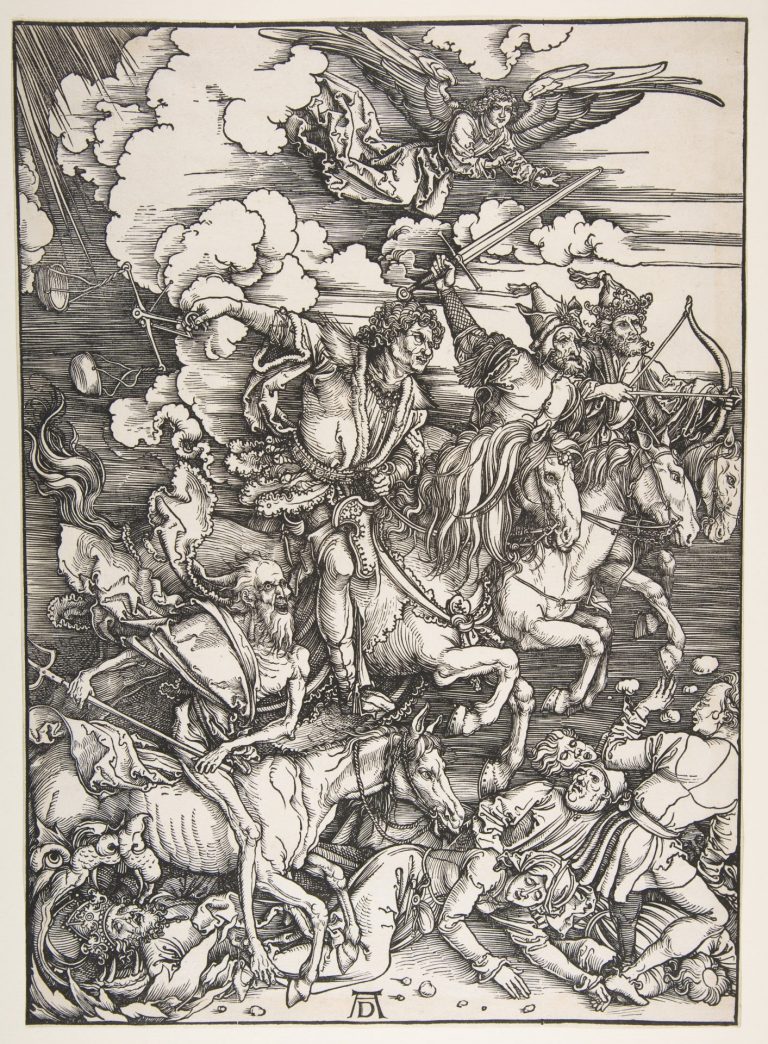- December 16, 2021
How artists have represented drunkenness from ancient cultures till the 20th century The Art…

The Art Syndicate Staff Writer: Constanza Ontiveros Valdés
During mankind’s history, many inventions and technological breakthroughs have shifted how art is created and interpreted. As we speak, new tech developments, such as the recently ultra-famous NFTs, continue to transform and enrich the practice of artists around the globe. Let’s look at the history of three inventions that have deeply impacted artmaking.
1) Printmaking
Printmaking is an ancient art that involves transferring ink from a matrix to a sheet of paper or other material. Woodblock printing is the first printing technique in paper that we know of. The origins of this method, which involves carving into a block of wood and then adding ink to portions of it before pressing it into paper, dates back to the 7th century, in China, and was perfected during the following centuries. Then, around the 14th century, Woodblock printing landed in Europe and was used by artists like Albrecht Dürer and Titian, who elevated the status of printmaking to an art form. Many of these images also served as illustrations for the newly printed books created thanks to the invention of the printing press, in 1450, which opened a whole new world of knowledge for artists.
By the middle of the 15th century, prints were also produced using the intaglio technique in which the image is created by incising into the printing plate – the incised line or area holds the ink and creates the image. This resulted in a diversification of printing techniques, such as drypoint, engraving, and etching, that were creatively explored by artists. Now, during the 19th century, lithography, an entirely new method of printing invented in 1796, allowed artists the most direct means of creating multiple images from drawing and led to the emergence of the poster. Also, during the mid-20th century, the experimentation that contemporary artists, like Andy Warhol, undertook with silkscreen printing resulted in the internationally-famous pop artworks.
2) The invention of photography
Before the invention of photography, in 1839, realistic images of the world were only captured by the most skilled artists. However, the emergence of photography revolutionized art-making, driving artists away from visual realism to capture movement and light and, ultimately, to experiment with different forms of abstraction and visual effects. Aside from the philosophical and spiritual quest that each artist embarked into, creatives of all sorts made their objective to go beyond realism which resulted in a myriad of artistic movements that started with Impressionism and continued with Expressionism, Cubism, Surrealism, and so on. At the same time, photographs were a useful and never-before-seen tool that allowed artists to paint their models without standing before them for hours at a time. Portable cameras could also be taken outdoors to record landscapes – enabling the painting process to be completed later on in the studio.
As time went by, in the late 19th century, improvements in technology and processing, along with the invention of small handheld cameras, suddenly made it possible for anyone of middle-class means to take photographs, something that we now do every day with our iPhones. Last but not least, photography steadily emerged as an art form in its own right and these days photographs hang proudly on the most important museum walls.
3) The refinement of oil painting and the later invention of portable paint tubes
For many years oil painting was considered a Renaissance invention, however, in 2007, it was discovered that it goes back to ancient times, when early humans (650 AD) mixed animal fats with earth and stain to form the first oil paints. Now, even if they have been around for a long time, it was up until the 15th century when oil painting was refined and gained its distinctive features. Particularly, early Netherlandish painter Jan van Eyck, who once was thought to be the inventor of oil paints, is credited for developing a stable binder that granted oil paints their silky texture.
As time went by, oil paints arrived in Italy and elsewhere gaining supremacy as an art material. The prominence of oil painting over other materials is due, in part, to its flexibility given it allows artists to create many layers, translucent effects, and intricate details next to thick impasto. Each following generation of artists fine-tuned the medium and experimented with their signature recipes. And then, in 1840, another breakthrough came in when the portable oil paint tube was invented by American painter John G. Rand transforming the once complex process of mixing and handling oil paints into a ready to use product. This invention allowed artists, mainly the Impressionists, to easily paint outdoors at any time. Likewise, Rand´s tubes enriched the painter´s palette that has remained nearly unchanged since the Renaissance.
These are the images:
Albrecht Dürer (German, Nuremberg 1471–1528 Nuremberg) ,1498, Woodcut
Share Post:
The Art Syndicate is a new wave art collective based in a newly renovated warehouse in St Peters, Sydney which specialises in street art and media.
344 Bourke St
Surry Hills NSW 2010
Australia – New South Wales
Opening times: Wed–Sunday, we are usualy in 11-5 however,often do house calls during these hours. Please call ahead to ensure we have someone ready to greet you.
For all press enquiries please contact us at;
Copyright © 2022 The Art Syndicate | All rights reserved.
Stay connected and Keep up to-date with the latest in art news, art investment, local events and art history though our weekly mail outs.
And dont worry, we hate spam too! You can unsubcribe at anytime.